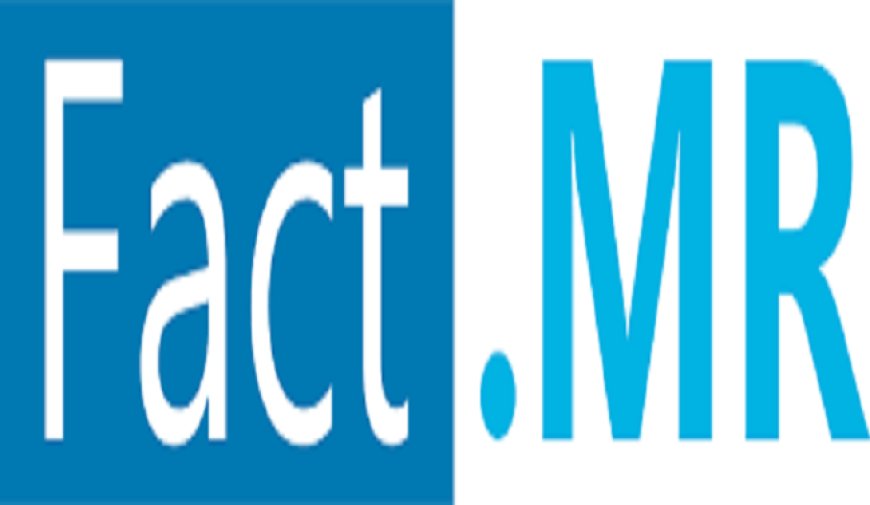Fluctuating Raw Material Prices Pose Challenges to Isophorone Producers
The isophorone market is valued at approximately US$ 1.26 billion in 2024 and is anticipated to grow at a CAGR of 4.7%, reaching US$ 1.99 billion by 2034.

The isophorone market is valued at approximately US$ 1.26 billion in 2024 and is anticipated to grow at a CAGR of 4.7%, reaching US$ 1.99 billion by 2034.
The isophorone market is a dynamic sector within the specialty chemicals industry, primarily driven by its versatile applications across various end-use industries. Isophorone, a chemical compound with exceptional properties such as high boiling point and stability, serves as an important intermediate in the production of coatings, adhesives, inks, and more. Its demand is closely linked to sectors like construction, automotive, and electronics, where these materials are extensively used. The market’s growth trajectory is influenced by advancements in industrial production processes and the rising need for sustainable solutions.
Market Insights
Understanding the isophorone market requires a focus on its key drivers, restraints, and trends. Environmental concerns are shaping the market as manufacturers increasingly emphasize eco-friendly production techniques to meet regulatory compliance. Additionally, the growing adoption of high-performance coatings and adhesives in automotive and construction sectors fuels the demand for isophorone. The Asia-Pacific region, in particular, is witnessing robust growth, with countries like China and India leading the consumption due to rapid industrialization and urbanization. On the flip side, stringent environmental regulations and volatility in raw material prices pose challenges to market players.
Future Outlook
The future of the isophorone market appears promising, with consistent demand across various applications. Emerging economies are likely to be the epicenters of growth, as they invest heavily in infrastructure development and industrial expansion. Furthermore, innovations in isophorone derivatives for niche applications such as pharmaceuticals and agrochemicals are expected to unlock new revenue streams. Sustainability will remain a pivotal theme, encouraging the adoption of green chemistry practices in production. By 2030, the market is anticipated to witness significant expansion, driven by strategic collaborations and technological advancements.
Market Demand
The demand for isophorone is closely aligned with its widespread application in coatings and adhesives, which account for a substantial share of the global market. The automotive industry’s shift toward lightweight and durable materials has also bolstered the consumption of isophorone-based products. Additionally, the packaging sector, spurred by the growth of e-commerce, is increasingly relying on high-quality printing inks, another key application area for isophorone. These factors collectively contribute to a steady rise in market demand, particularly in regions with burgeoning industrial activities.
List of Key Companies Profiled in The Report
- Dow
- Prasol Chemicals Pvt. Ltd.
- Evonik Resource Efficiency GmbH
- SI Group, Inc.
- KH Chemicals
- LGC Limited
- Others
Market Growth
The growth of the isophorone market is underpinned by several macroeconomic and industry-specific factors. Rising disposable incomes, urbanization, and industrial development are expanding the scope of end-use industries, thereby boosting market growth. Technological advancements in production techniques have also enhanced the efficiency and quality of isophorone-based products, further driving their adoption. Additionally, the global push toward energy efficiency and sustainable solutions has paved the way for increased utilization of isophorone in renewable energy applications, including photovoltaic coatings.
Market Opportunities
The isophorone market offers numerous opportunities for stakeholders to capitalize on evolving trends. For instance, the growing preference for eco-friendly and non-toxic chemicals presents a lucrative avenue for manufacturers to innovate and differentiate their offerings. Expanding applications in the healthcare and pharmaceutical sectors, where isophorone derivatives are used in drug formulation, also represent untapped potential. Strategic investments in research and development can help companies explore novel applications and improve their competitive edge in this evolving market landscape.
Recent Industry News
Recent developments in the isophorone market highlight a wave of strategic initiatives undertaken by key players. Companies are increasingly focusing on expanding their production capacities to meet the rising global demand. For example, leading manufacturers have announced the establishment of new facilities in Asia-Pacific to leverage the region’s economic growth and favorable regulatory environment. Collaborations between manufacturers and research institutions to develop sustainable production processes have also garnered attention. Additionally, trade policies and shifts in global supply chains continue to impact the market dynamics, making adaptability a key success factor.
Notable Developments
Several notable developments have shaped the isophorone market in recent years. Key players have embraced digitalization and automation to enhance operational efficiency and reduce production costs. The integration of circular economy principles, such as recycling and waste reduction, has become a priority for many manufacturers, aligning with global sustainability goals. Furthermore, innovations in isophorone derivatives have led to the introduction of high-performance products tailored to specific industrial needs. The adoption of advanced distribution strategies, including e-commerce platforms, has also facilitated market penetration across untapped regions.
Competitive Landscape
Key players in the isophorone market are focusing on increasing production capacity, acquiring other firms to expand their market share, and strengthening relationships with raw material suppliers to ensure price stability.
For instance, Evonik has announced advancements in extending the service life of joint prostheses using PEEK biomaterials. The company is also exploring opportunities to broaden the applications of its high-performance polymer, VESTAKEEP PEEK.












